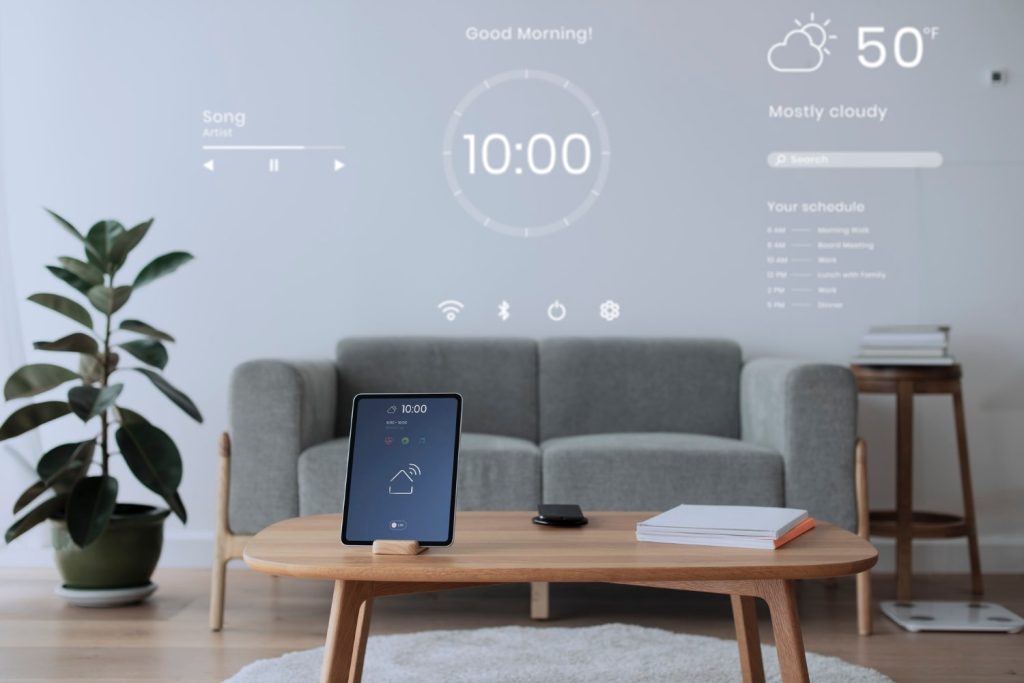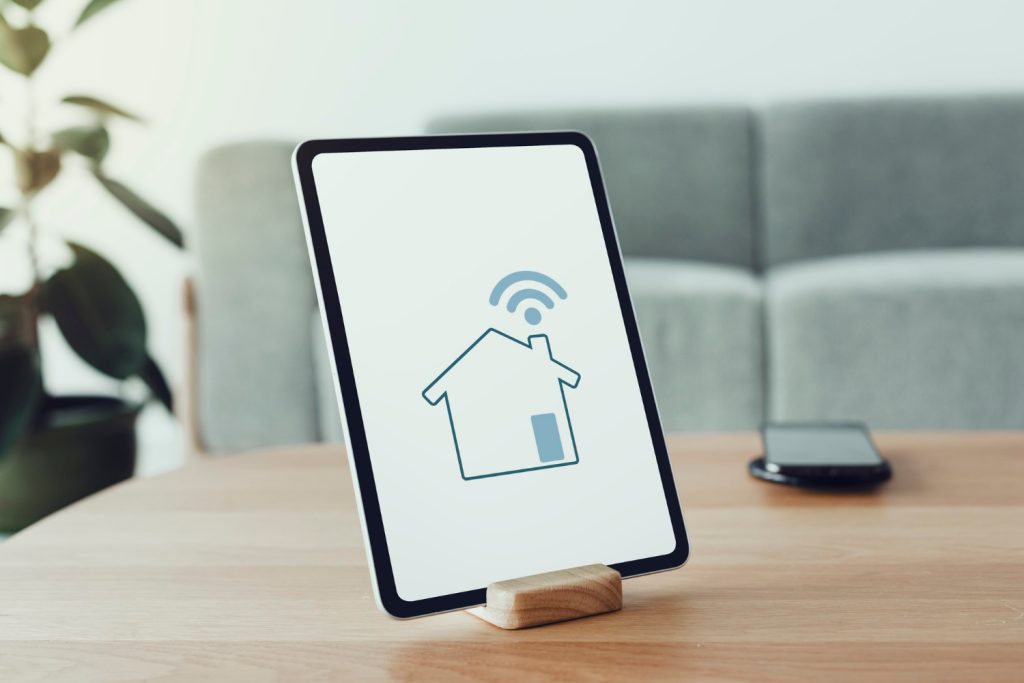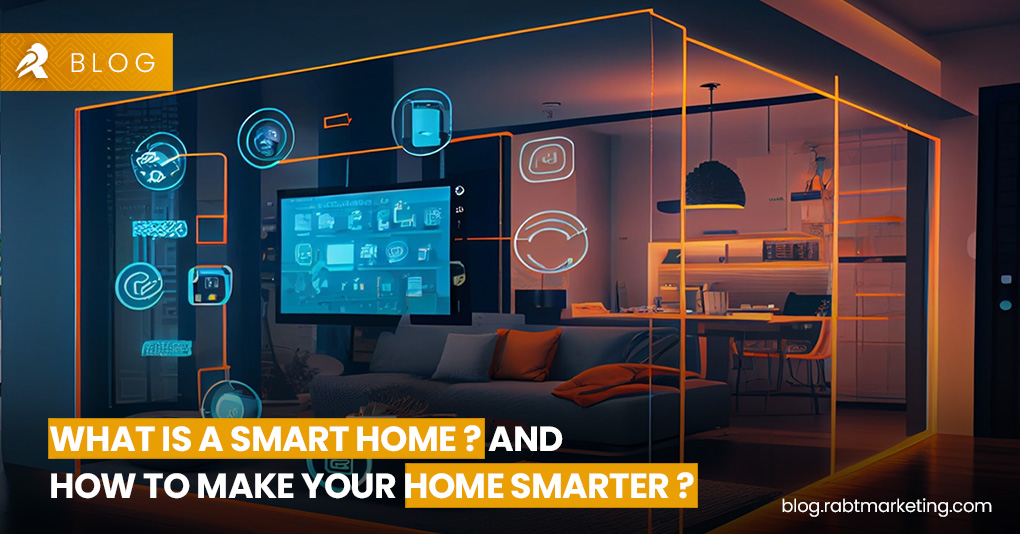A smart home is a house that uses automation to control various devices and systems through the internet. This includes things like lighting, thermostats, security systems, entertainment systems, and appliances. Smart homes can be controlled remotely using a smartphone, tablet, or computer. Smart Homes use a range of devices such as sensors, cameras, and Wi-Fi-enabled thermostats to make everyday tasks more manageable and save energy.
A Smart Home is built of a network of multiple connected devices. They include a range of products such as smart lights, thermostats, and cameras that can be controlled remotely through your smartphone or other devices. The ability to control devices from a single interface is a significant benefit of a Smart Home. Not only does it offer convenience, but it also enables homeowners to monitor their homes from anywhere, anytime.
What is Automation
Automation is another critical feature of Smart Homes. It involves programming your connected devices to operate automatically, eliminating the need for manual control. For example, you can schedule your lights to turn on and off at specific times of the day or set up your thermostat to adjust to your desired temperature automatically. Smart Homes offer a range of automation options, making them a great solution for homeowners looking to simplify their lives.
Benefits of Smart Home

Smart homes offer a variety of benefits, leveraging technology to enhance convenience, security, energy efficiency, and overall quality of life. Here are some of the key benefits of smart homes:
Convenience
One of the primary advantages of smart homes is the convenience they provide. Automation allows homeowners to control various devices and systems with a single interface, such as a smartphone or voice command, making it easier to manage household tasks.
Energy Efficiency
Smart home technology enables better energy management through the automation of lighting, heating, ventilation, and air conditioning (HVAC) systems. This can result in energy savings and reduced utility bills.
Security
Smart home security systems offer advanced features like remote monitoring, motion detection, and real-time alerts. Smart locks, cameras, and doorbell cameras enhance home security and provide homeowners with greater peace of mind.
Remote Monitoring and Control
Smart home devices can be monitored and controlled remotely, allowing homeowners to check on their homes, adjust settings, and receive notifications even when they are away. This is especially beneficial for security and energy management.
Integration
Many smart home devices can be integrated with each other, creating a cohesive ecosystem. This allows for clear communication and coordination between different devices, enhancing the overall efficiency and functionality of the smart home.
Customization
Smart home systems are often customizable to meet the specific needs and preferences of homeowners. Users can set up automation routines, adjust settings, and tailor the smart home experience to suit their lifestyle.
Improved Safety
Smart home technology includes features such as smoke detectors, carbon monoxide detectors, and water leak sensors that can provide early warnings and help prevent accidents or damage.
Health and Well-being
Some smart home devices are designed to enhance health and well-being. For example, smart thermostats can create a comfortable environment, while smart appliances can assist with meal planning and nutrition.
Increased Home Value
The integration of smart home technology can increase the resale value of a home. Many homebuyers are attracted to the convenience and energy efficiency that smart homes offer.
Environmental Impact
The energy-efficient features of smart homes contribute to reducing overall energy consumption, which can have a positive impact on the environment by lowering carbon emissions.
Selecting the Best Smart Home Devices
Choosing the right Smart Home devices can be overwhelming with so many options on the market. But fear not, with a little research, you can find the ones that fit your needs perfectly.
Compatibility is an important factor when it comes to Smart Home devices. Check whether the devices you’re considering are compatible with each other and with your existing Smart Home network. This is especially important if you’re building your Smart Home system from scratch. Some devices may require a specific hub or gateway to function.
When selecting devices, ensure they can be controlled by a single app or voice assistant to avoid compatibility issues and confusion.
Device Features
Smart Home devices come with a wide range of features, but not all of them may be essential for you. Consider what you want to achieve and which features align with your goals.
Smart Thermostat
Energy-saving features, voice control, mobile app control, temperature sensors, learning capabilities.
Smart Lock
Remote lock and unlock, automatic locking, compatibility with existing locks, voice control, keyless entry, access control.
Smart Speaker
High-quality sound, voice assistant, multi-room audio, compatibility with other Smart Home devices, media streaming.
Smart Light Bulb
Voice control, mobile app control, color-changing capabilities, dimming, scheduling, compatibility with other Smart Home devices.
Ensure you choose devices with features that align with your needs and preferences. For example, if you’re keen on energy-saving, a Smart Thermostat should be on top of your list.
Building a Reliable Smart Home Network

A stable network infrastructure is essential for a Smart Home. With the increasing number of connected devices, a good Wi-Fi network is vital to ensure a reliable connection between devices and the internet. To achieve this, it’s important to consider the following:
Router Placement
The location of your router can significantly affect its performance. It’s advisable to place it in a central location, away from obstacles such as walls and large pieces of furniture. If possible, keep it away from other electronic devices that may interfere with signals.
Wi-Fi Signal Strength
Ensure that your Wi-Fi signal strength is adequate for the size of your Smart Home. If the signal is weak in certain areas, consider using a Wi-Fi extender or mesh network to boost the signal. This ensures that all devices have a reliable connection.
Router Security
Protecting your Smart Home network should be a top priority. Ensure that your router’s security settings are up to date and that passwords are strong and regularly changed. You may also consider using encryption technologies to secure your network.
Network Segmentation
Segmenting your network allows you to create separate networks for different devices, ensuring that any security breaches are contained. For instance, you can place your Smart Home devices on a separate network from your personal devices, such as laptops or phones.
Integrating Devices in Your Smart Home System
Creating a Smart Home system involves integrating a wide range of devices. These devices can come from different manufacturers, and compatibility can sometimes be an issue. Luckily, there are various methods to connect and integrate devices into a cohesive system.
Device Integration
The first step in integrating devices is to ensure compatibility. This can be done by carefully researching the devices you want to include in your Smart Home system. Look for compatibility information on each device’s product page or manual.
Once you have compatible devices, you can start connecting them. Many devices can be connected through Wi-Fi or Bluetooth, but others may require a wired connection. Make sure to follow the instructions provided for each device to ensure a successful connection.
Smart Home Hub
A Smart Home hub can simplify device integration by acting as a central control system for all your devices. It can connect to various devices through different protocols and unify them into a streamlined system. Some popular Smart Home hubs include Amazon Echo and Google Home.
The Technology Behind Smart Homes
Internet of Things (IoT)
The backbone of smart homes, IoT connects devices over the internet, enabling them to communicate and share data. This interconnectedness forms the basis for the operation of smart home ecosystems.
Artificial Intelligence (AI)
AI plays a crucial role in smart homes, enabling devices to learn and adapt to user behavior. Machine learning algorithms enhance the efficiency and responsiveness of smart home systems.
Connectivity Protocols
Various connectivity protocols, such as Wi-Fi, Bluetooth, ZigBee, and Z-Wave, facilitate communication between devices in a smart home. Each protocol has its advantages, catering to different needs and ranges.
Transforming Your Living Room with Smart Home Entertainment
One of the most exciting aspects of a Smart Home is the ability to create an immersive entertainment experience in your living room. With the right combination of Smart Home devices, you can enjoy seamless audio and video streaming, integrated media controls, and much more.
Smart Audio Systems
Smart audio systems are a must-have for any Smart Home entertainment setup. With devices like the Amazon Echo or Google Nest Hub, you can easily stream music, news, and podcasts directly from your favorite services, including Spotify and Pandora. These devices also offer advanced voice control options, allowing you to adjust the volume, skip tracks, and more with simple commands.
Video Streaming
Smart Home entertainment wouldn’t be complete without video streaming capabilities. Devices like the Amazon Fire TV Stick and Google Chromecast allow you to stream your favorite TV shows and movies directly to your living room TV with ease. These devices also offer voice control options, making it easy to search for content and control playback with simple commands.
Read More:- Robotics and Automation in the Construction Industry: Building a Smarter Future
Read More:- What is Building Information Modeling BIM and How it is Shaping the Construction Industry ?
Conclusion
The benefits of a Smart Home extend beyond convenience and efficiency. With the ability to control and monitor your home from anywhere, you can gain greater peace of mind and security. Smart Home technology can also help you save energy, reduce your environmental footprint, and lower utility costs.
Ultimately, the key to creating a successful Smart Home is selecting the right devices, setting up a reliable network infrastructure, and configuring automation routines that align with your lifestyle. With the right tools and setup, you can transform your living space into a connected and intuitive environment that enhances your quality of life.
FAQ
Q. What is a Smart Home?
A Smart Home is a living environment that incorporates connected devices and automation to enhance convenience, security, and energy efficiency.
Q. How do I select the best Smart Home devices?
When choosing Smart Home devices, it’s important to consider compatibility with your existing setup and desired features that meet your specific needs.
Q. How can I build a reliable Smart Home network?
To establish a stable connection between your Smart Home devices and the internet, you need to set up a robust Wi-Fi network and choose a reliable router.
Q. How do I integrate devices in my Smart Home system?
There are various methods for connecting and integrating different Smart Home devices into a cohesive system, including the use of a Smart Home hub for centralized control.
Q. Can I automate my daily routine with Smart Home technology?
Absolutely! Smart Home automation allows you to automate everyday tasks and routines, making your life more convenient and efficient.
Q. How can I ensure the security of my Smart Home?
Securing your Smart Home involves measures such as device monitoring, encryption, and the use of smart security systems to protect your privacy and prevent unauthorized access.
Q. How can I transform my living room with Smart Home entertainment?
You can create an immersive entertainment experience in your living room by incorporating Smart Home entertainment systems, including smart audio devices, video streaming, and integrated media controls.
Q. Can Smart Home technology help me save energy?
Absolutely! Smart Home technology offers features like smart thermostats and energy monitoring devices that can help you save energy and reduce utility costs.
Q. What are the benefits of creating a Smart Home?
By creating a Smart Home, you can enjoy the convenience, security, energy efficiency, and entertainment capabilities that connected devices and automation provide

